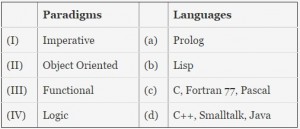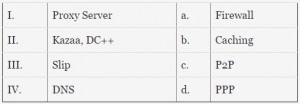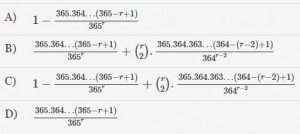Gate IT 2008
Question 11
For problems X and Y, Y is NP-complete and X reduces to Y in polynomial time. Which of the following is TRUE?
Question 13
A processor that has carry, overflow and sign flag bits as part of its program status word (PSW) performs addition of the following two 2\'s complement numbers 01001101 and 11101001. After the execution of this addition operation, the status of the carry, overflow and sign flags, respectively will be:
Question 14
A paging scheme uses a Translation Look-aside Buffer (TLB). A TLB-access takes 10 ns and a main memory access takes 50 ns. What is the effective access time(in ns) if the TLB hit ratio is 90% and there is no page-fault?
Question 15
Find if the following statements in the context of software testing are TRUE or FALSE.
(S1) Statement coverage cannot guarantee execution of loops in a program under test.
(S2) Use of independent path testing criterion guarantees execution of each loop in a program under test more than once.
(S1) Statement coverage cannot guarantee execution of loops in a program under test.
(S2) Use of independent path testing criterion guarantees execution of each loop in a program under test more than once.
Question 17
Question 18
Which of the following first order formula is logically valid? Here α(x) is a first order formula with x as a free variable, and β is a first order formula with no free variable.
Question 20
There are 82 questions to complete.
Last Updated :
Take a part in the ongoing discussion


